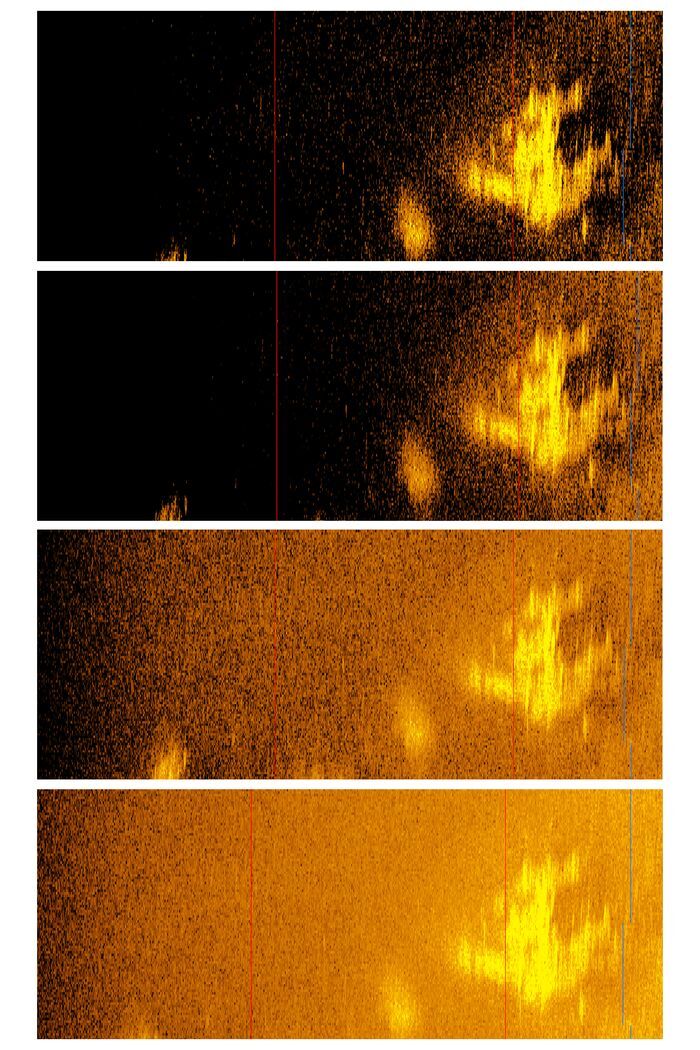
A sonar image — reflecting varying levels of brightness — of the airplane-shaped object resting 5,000 meters underwater about 100 miles from Howland Island.
THE Wall Street Journal first reported it on Friday last week.
“Is This Amelia Earhart’s Long-Lost Plane?” the Journal asked.
By Tuesday, at least three other national news organizations had carried the story as well.
TIME magazine:
“An Exploration Team Believes They Found Amelia Earhart’s Missing Plane. Here’s Why”
CBS News:
“Amelia Earhart’s long-lost plane possibly detected by sonar 16,000 feet underwater, exploration team claims”
NPR:
“Amelia Earhart’s long-lost plane possibly spotted in the Pacific by exploration team”
From the Journal:
“When she disappeared on her most ambitious trip—what she hoped would be a record-setting journey around the world — it sparked a decadeslong mystery: What happened to Amelia Earhart?
“Now, a commercial real-estate investor from Charleston, S.C., thinks he might have found a vital clue.”
Tony Romeo is “the latest in a string of adventurers to plumb the Pacific Ocean in search of the plane Earhart was flying in 1937 when, at the peak of her fame, she vanished,” the Journal said. Romero is “a pilot himself and a former U.S. Air Force intelligence officer.” To fund his search — which has so far cost him $11 million (!) — Romeo sold his real estate interests. Using high-tech gear, which included an underwater drone, he and a 16-person crew launched their search aboard a research vessel in September 2023 from Tarawa, Kiribati, a port near Howland Island, “a dot of land between Australia and Hawaii where Earhart was last expected to land” in July 1937 to refuel.
In December 2023, the Journal said, Romeo “returned…with a sonar image of an aircraft-shaped object resting on the ocean floor. He believes it’s Earhart’s Lockheed 10-E Electra, and experts are intrigued.”
According to the Journal, “The location where Romeo said he captured the image is about right, said Dorothy Cochrane, a curator in the aeronautics department of the Smithsonian Institution’s National Air and Space Museum, and sonar experts who have viewed the image agree that it’s unusual enough to take a closer look.”
The Journal also noted that since Earhart’s disappearance “voyagers on at least a half-dozen trips have sunk millions into hunts for her lost plane. People can’t quit Amelia. They also can’t seem to find her.”
In Romeo’s case, his “outings…lasted 36 hours each,” and his unmanned submersible “scanned 5,200 square miles of ocean floor. About 30 days in, it had captured a fuzzy sonar image of an object the size and shape of an airplane resting some 5,000 meters underwater within 100 miles of Howland Island. But the team didn’t discover the image in the drone’s data until about 90 days into the trip. By then, it wasn’t practical to turn back, Romeo said.”
He plans to return to get better images. Experts, for their part, “want to see clearer views of the object with details such as a serial number that matches Earhart’s vessel.” Of course. “Until you physically take a look at this, there’s no way to say for sure what that is,” the Journal quoted Andrew Pietruszka as saying. Pietruszka is “an underwater archaeologist at the Scripps Institution of Oceanography at University of California, San Diego, who leads deep ocean searches for lost U.S. military aircraft and the soldiers who went down with them.”
The Journal also pointed out that “the search for Earhart’s plane is particularly challenging because of the remoteness of her last known location. ‘It’s very deep water, and the area that she could’ve possibly been in is huge,’ Dettweiler said.”
“Most experts who have studied Earhart’s last broadcasts expect to find her craft within range of Howland Island,” the Journal stated, “but in the absence of its discovery, a host of theories have emerged. In one improbable scenario, Earhart was captured by a foreign military. In another, she made a secret return to the U.S. and lived a quiet life out of the spotlight under a new name. In a third, she was a spy. ‘That’s just nonsense,’ said Cochrane, the National Air and Space Museum curator. ‘None of that is practical.’ ”
“Improbable” and “nonsense” to some perhaps, but not to those who believe that Earhart and her navigator Fred Noonan did go down in the Pacific (near the Marshalls, some say), but were picked up by the Japanese and brought to Saipan where they died or were executed.
But what if, one of these days, someone actually finds Earhart’s plane on the bottom of the ocean?
Many would consider it conclusive evidence that Earhart’s plane ran out of fuel and crashed at sea where she and Noonan perished. But others could say that Earhart and Noonan might have survived and were “rescued” by the Japanese, who then brought them to Saipan. How do we know they died at sea anyway? What about their remains? Could they still be recovered? As the cops on TV shows would put it, “No body, no case.”
“It was one of the great mysteries of the 20th century and still now into the 21st century,” Cochrane told the Journal. “We’re all hopeful that the mystery will be solved.”
Maybe. But for sure, many people will continue to believe what they want to believe.
Send feedback to editor@mvariety.com











